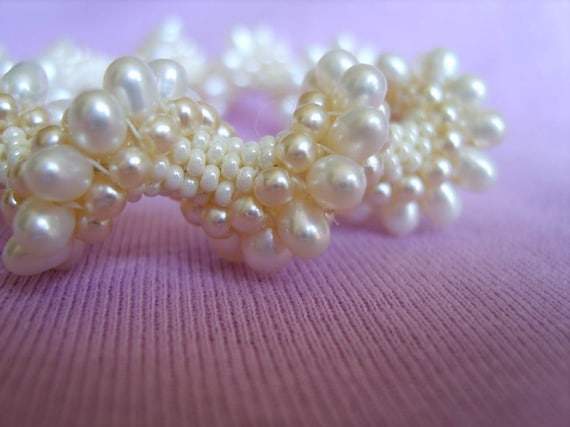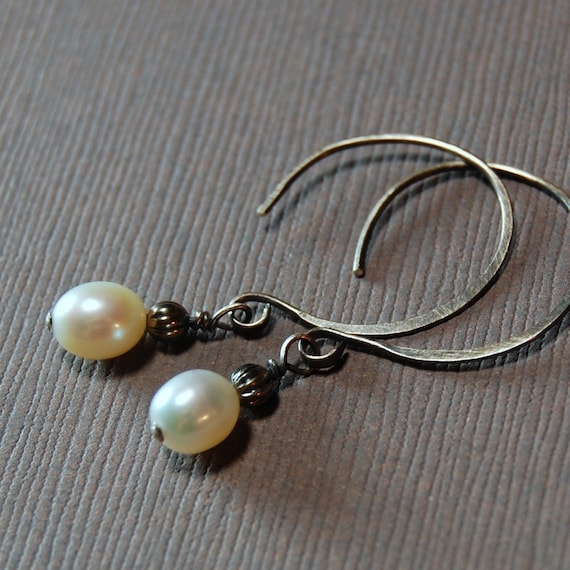What are pearls, anyway? The snarky answer is: solid evidence of an irritated oyster. The scientific answer is: layers of aragonite platelets bound together by conchiolin.

Where to start?
How about the thing that's irritating our oyster. A piece of sand gets into the oyster shell. The oyster can't spit it out or scratch so it coats the particle with something smooth - nacre.
Nacre is a combination of conchiolin and aragonite. Aragonite is the crystal form of calcium carbonate. Conchiolin is a substance similar to hair or fingernails that binds the crystals together.

Pearls grow a bit like trees - in layers. Some years produce beautiful, thick layers, some years aren't so pretty. The color, layer thickness and texture vary between oyster types and environments.

Over time, the pearl gets larger. The final diameter depends on the size of the oyster it's irritating. Shapes also vary.

And now for some cultured, probably freshwater, pearl jewelry from our fabulous artists:



9 comments:
I'm a June kid and pearl is my "stone". Keep the info coming! I love to learn from you :-)
Great information thanks. I am a June baby too.
I have a whole series planned. Tahitian, akoya, and more.
My motto is "Diamonds are a girls best friend but pearls are her soul", I'm a pearl girl and love the last couple of blog posts you have done.
Love the pearl series., Andrea. Like Cat and Caron, I love pearls. They are beautiful on their own or mixed with other stones.
Very interesting, thank you. Great idea for a series.
Very interesting post! I wish I could make something so beautiful when I'm irritated! :)
Thank you so very much for the info and for featuring my work!
Wow, a Cellini spiral with real pearls! What a treasure!
Post a Comment